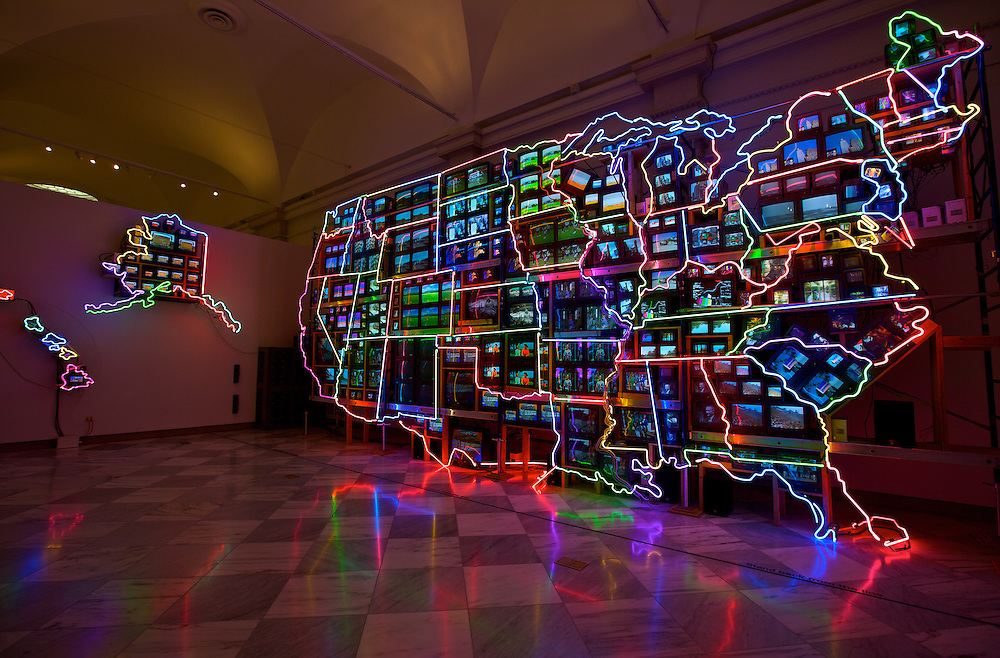Hyper interconnectivity is, perhaps, one of those select key elements of New Media art and visual culture that is exclusive to New Media (at least, in this intense quality) due to the historical and unprecedented technological advancements of television and network tech, with special focus on the Internet. The introduction of internetworking systems and programs that allow users from across the globe to almost instantly access and share information resulted in changes not only to the immediate processes of informational exchange, but to visual and social cultures at large.
Cultural elements - music, art, language, customs, practices - can now spread at a higher rate than ever before. Messages can reach a person from half a world away in just a few seconds. This can be both thrilling and immensely concerning; and artists working in the field of New Media often respond to these concerns by exploring the concept and the technology of late 20th-21st century hyperconnectivity (whether that exploration is intentional and targeted, or the functionality of hyperconnective structures and technology facilitates the creation/distribution/meaning making of the work behind the scenes).
Nam June Paik was one of the artists that explored the idea of New Media's connectivity in works of art; he is specifically known for his works that critically examine the role and technology of television and video as it entered the social life of communities around the world. He was concerned with the light-fast progression of such technology and the human response to this progression:
The real issue ... is not to make another scientific toy, but how to humanize the technology and the electronic medium, which is progressing rapidly - too rapidly.
His famous work Electronic Superhighway: Continental U.S., Alaska, Hawaii (1995) explores and amplifies the notions of hyperconnectivity and information exchange with a fifty-one channel video installation - a map of the USA, flattened and interwoven into a patchwork of overwhelming visual and aural information stimuli. The US is represented as a system of information, distinct at each of its final points(states) and yet connected by new networking technology and the progressing cultural exchange facilitated by that technology.

Nam June Paik, Electronic Superhighway: Continental U.S., Alaska, Hawaii, 1995, fifty-one channel video installation (including one closed-circuit television feed), custom electronics, neon lighting, steel and wood; color, sound, roughly 15 x 40 x 4
This work can be fun and exciting: the bright and saturated colors of the neon lights, the blinking screens of the TV sets showcasing looping recordings that are associated with each of the states, the vastness and yet the closeness of the work - these all mirror the positive effects that networking technology has on the world - connection, information exchange, diversity.
However, Nam June Paik is critical about the representation of this new tech: interconnectivity also flattens - there's only one video channel for each of the states (who picks the video to be displayed and what tropes does that communicate about the represented state?); and the colorful display of blinking light is as thrilling as it is overwhelming and disarming.
This work, along with many others, recognizes interconnectivity as one of New Media's key elements and explores the notions of its use and adoption into communities around the world. Interconnectivity is a neutral tool, defined by the arms that wield it - how did it change us and where could it lead us to next?





